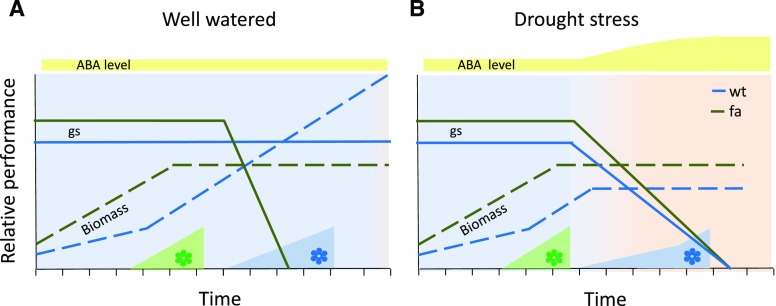Figure 11.
Schematic model of the relative development and physiological performance of wild-type (wt) and fa plants under drought-stress and well-watered conditions. A, Under well-watered conditions (i.e. no drought stress induction), ABA levels are relatively constant. The fa plants exhibit stress-escape behavior that includes greater initial growth vigor and gs, and earlier flowering time, as compared with that in the wild type. However, the growth rate and gs of fa plants decline more quickly as the plant senesces, whereas the wild-type gs remains constant and wild-type plant biomass surpasses that of fa plants. These differences are mirrored in yield levels. B, Under drought conditions, plants reduce their gs at a similar point and with a similar pattern. The fa stress-escape behavior results in a less severe yield penalty, as compared with the wild type. The fa flowering initiated under well-watered conditions is not affected by drought. Wild-type plants exhibit delayed flowering at the beginning of drought, but later reach a high flowering percentage (wild-type flowering under drought stress based on Su et al., 2013). Taken together, this model exemplifies the payoff of the stress-escape mechanism. Under optimal conditions, this mechanism severely limits yield potential. However, under drought conditions that begin in the middle of the growing season, this mechanism reduces the yield penalty and maintains yield stability.

